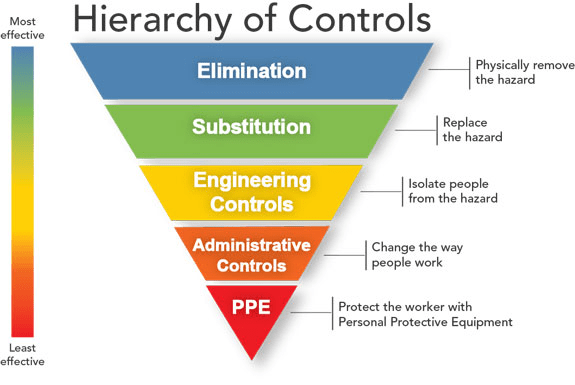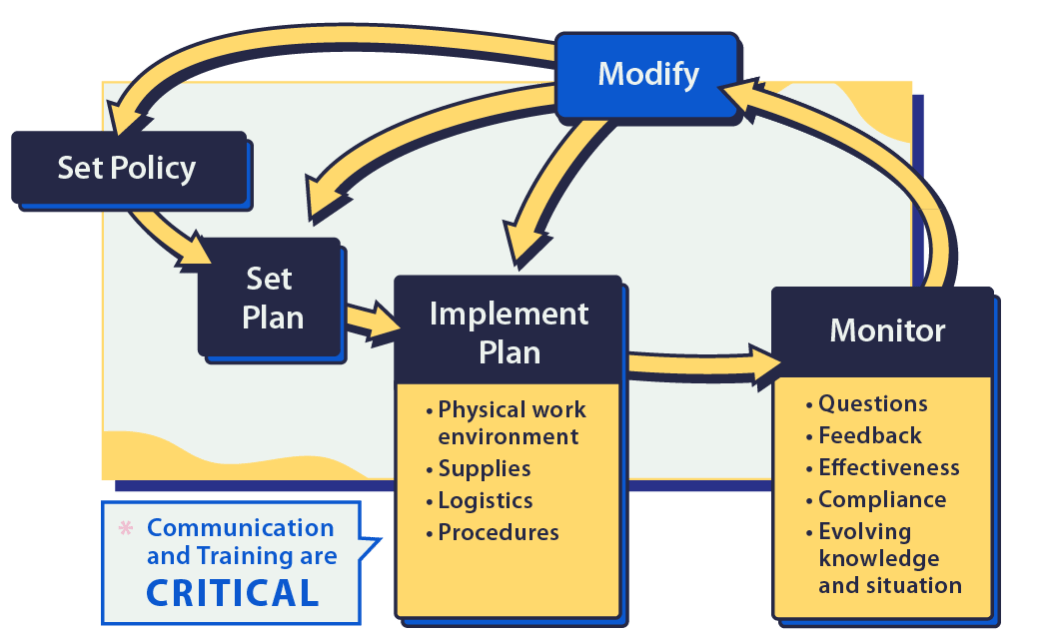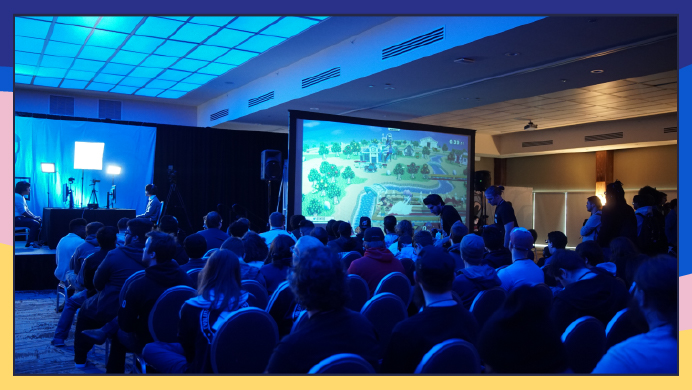Training and communication need to be baked in for the success of any safety plan—and that plan needs to include a feedback loop. This has been especially evident in the evolving COVID-19 pandemic, where decisions have to be made with limited data, where knowledge and public policy change over time, and an organization’s response must continue to evolve in order to adapt and survive and hopefully thrive.
Training and the Hierarchy of Controls
NIOSH’s Hierarchy of Controls is central to OSHA and CDC guidance to employers on workplace preparedness. This hierarchy shows that the most effective controls are the ones that eliminate all possible exposure to a hazard rather than relying on optimal human behavior to minimize risk.

But some hazards (like viruses) can’t be completely eliminated from the workplace, and some people will still be exposed. Work safety protocols and personal protective equipment (PPE) must be part of a safety response plan. People need to understand safety protocols and how to use their PPE, or the plan will be ineffective.
Training and communication are the means to get employees (and customers, suppliers, and other partners) informed, aligned, and able to do their work with the new controls in place.
OSHA’s text-based guidance is quite lengthy, so we adapted it into a simple, interactive, free training course you can download here: COVID-19 Workplace Preparedness: Steps Employers Can Take to Reduce Worker Exposure Risk.
Now it’s time to get specific to your business, location, and employees.
What Does Effective Communication and Training Look Like?
Communication can mean videos, emails, phone calls, posters, video conference town halls—anything to get the word out. However, communication is NOT “one and done.” Especially in times of stress and change, people need to receive messages multiple times to process the information and the impact. Plan your communication to happen in waves and with layers to address people with different roles, needs, and questions.
Training takes over where communication leaves off. It’s the bridge from “here’s what’s going on” to “What do I do?” How do I perform my job while also learning unfamiliar tools and accommodating social distance? In a warehouse, how do changes in my packing station impact existing safety protocols? In a bank, how does a no-contact policy change the signature-intensive loan closing process? If I notice a co-worker appears sick, what do I do? It’s great to say that door handles should be wiped regularly—who is doing that, where are the supplies, and what happens if they run out?
Like communication, training is most effective when it comes in waves and layers that tie together, reinforce each other, and provide the most important training in just the right time, place, and form. Even small, discrete behaviors benefit from a multi-pronged, blended approach. Here’s a safe work practice example we can all relate to:
- Announce hand washing policy and procedure via email with a link to a “how to” video demonstrating how to wash hands effectively.
- Post an infographic above each sink to reinforce handwashing (reminder and how to).
- Put a poster on the break room refrigerator to wash hands before opening the door (just-in-time reminder at a likely failure point).
Any single one of those items would not be very effective, but together they provide knowledge and timely reminders to nudge employees toward safer behavior. If combined with a network of supervisors and peers championing handwashing, the change is much more likely to be adopted and to stick.
The Feedback Loop
As knowledge, circumstances, and the company’s response to a hazard evolve, so must the communication and training that support that response. This requires a feedback loop to gather employees’ questions and feedback, and monitor program effectiveness and compliance. Combined with emerging knowledge about the hazard itself and the social, political, economic, and regulatory environment, this feedback will trigger changes to company policy and plans, which ripple out into the physical work environment, supplies, logistics, and work processes—all of which require communication and training to minimize confusion and keep people current.

Avoid Overwhelm
In times of stress and change, people get overwhelmed more easily. Throwing more at them can, paradoxically, ensure less actually sticks. In the rush to be responsive, it’s important to focus on the most crucial objectives, messages, and behaviors in your communication and training, and to address them well.
That means:
- Identify the most important topics to communicate and train. Be disciplined and keep things lean to minimize learner overwhelm. For moderately important topics, make them available to employees as self-serve “pull” content—a wonderful alternative and complement to the critical “push” content.
- Design a blend of communication and training deliverables to be focused, digestible, layered, and effective. Pay attention to look and feel, which provide subconscious cues and emotional context to help learners take in, retain, and recall content.
- Use feedback loops to stay on top of changing needs and circumstances, and keep communication and training current and aligned.







